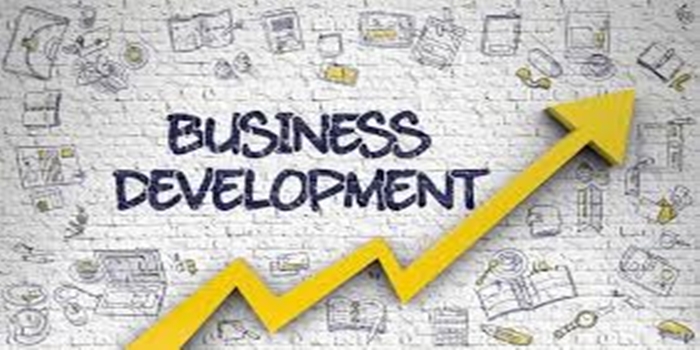In this article, we discussed the meaning of business development, the Process, how to create a business development plan and the features:
Definition
Business development is the process of planning for future growth by identifying new opportunities, forming partnerships, and adding value to a company. It involves understanding the target audience, market opportunities, and effective outreach channels to drive success.
Features of Business Development:
Growth Strategy:
It is a strategic approach to growth, encompassing activities that expand a company’s reach and impact.
Opportunity Identification:
It involves identifying new markets, customer segments, and potential partnerships to capitalize on.
Value Creation:
Business aims to create long-term value for the organization through the development of relationships, markets, and customers.
Relationship Building:
Building strong relationships with clients, partners, and other stakeholders is crucial for success in business development.
Sales and Marketing:
Business often overlaps with sales and marketing efforts, focusing on generating leads, nurturing relationships, and closing deals.
Market Research and Analysis:
Understanding market trends, competitor activities, and customer needs is essential for effective business development.
Innovation and Adaptability:
It can involve exploring new products, services, or business models to stay ahead of the competition.
The Business Development Process in Steps:
Step 1: Market Research/Analysis
Begin by conducting comprehensive market research to gain insights into market trends, customer needs, and the competitive landscape. Analyze data and gather additional information to identify potential growth opportunities and understand market dynamics.
Step 2: Establish Clear Goals and Objectives
Leveraging that research, define specific objectives and goals for business development efforts. These goals could include revenue targets, market expansion goals, customer acquisition targets, and product or service development. Setting clear goals provides a focus and direction for the business process.
Step 3: Generate and Qualify Leads
Use various sources, such as industry databases, networking, referrals, or online platforms, to generate a pool of potential leads. Identify individuals or companies that fit the target market criteria and evaluate them based on predetermined criteria to determine their suitability and potential value.
Step 4: Build Relationships and Present Solutions
Initiate contact with qualified leads and establish relationships through effective communication and engagement. Utilize networking events, industry conferences, personalized emails, or social media interactions to build trust and credibility.
As your relationship forms, develop and present tailored solutions that align with the client’s needs. Demonstrate the value proposition of the organization’s offerings and highlight key benefits and competitive advantages.
Step 5: Negotiate and Expand
Prepare and deliver proposals that outline the scope of work, pricing, deliverables, and timelines. Once the client agrees, collaborate with legal and other relevant internal teams to finalize and execute the contract to ensure all terms are clear and agreed upon. Maintain communication with the client throughout this process to address any questions or concerns.
Step 6: Continuously Evaluate
Continuously monitor and evaluate the effectiveness of business efforts. Analyze performance metrics, gather feedback from clients and internal stakeholders, and identify areas for improvement. Regularly refine strategies and processes to adapt to market changes and optimize outcomes.
How to Create a Business Development Plan:
To efficiently create and implement a business plan, the team needs to set clear objectives and goals—ones that are specific, measurable, achievable, relevant, and time-bound (SMART). You can align these objectives with the overall business goals of the company.
Companies often start by analyzing their current state through a SWOT analysis, evaluating their strengths, weaknesses, opportunities, and threats. This helps identify target markets and customer segments and define a unique value proposition.
The external-facing stages of a business development plan are crucial. These stages should outline sales and marketing strategies to generate leads and convert them into customers.
Teams should also conduct a financial analysis and resource planning to determine the resources needed for implementing the plan.
Conclusion
Business development is important to companies’ growth and achievement of their goals. It involves setting clear objectives, leveraging market research, forming strategic partnerships, and aligning efforts across all departments to drive success.
READ: Building Business Development Resilience


